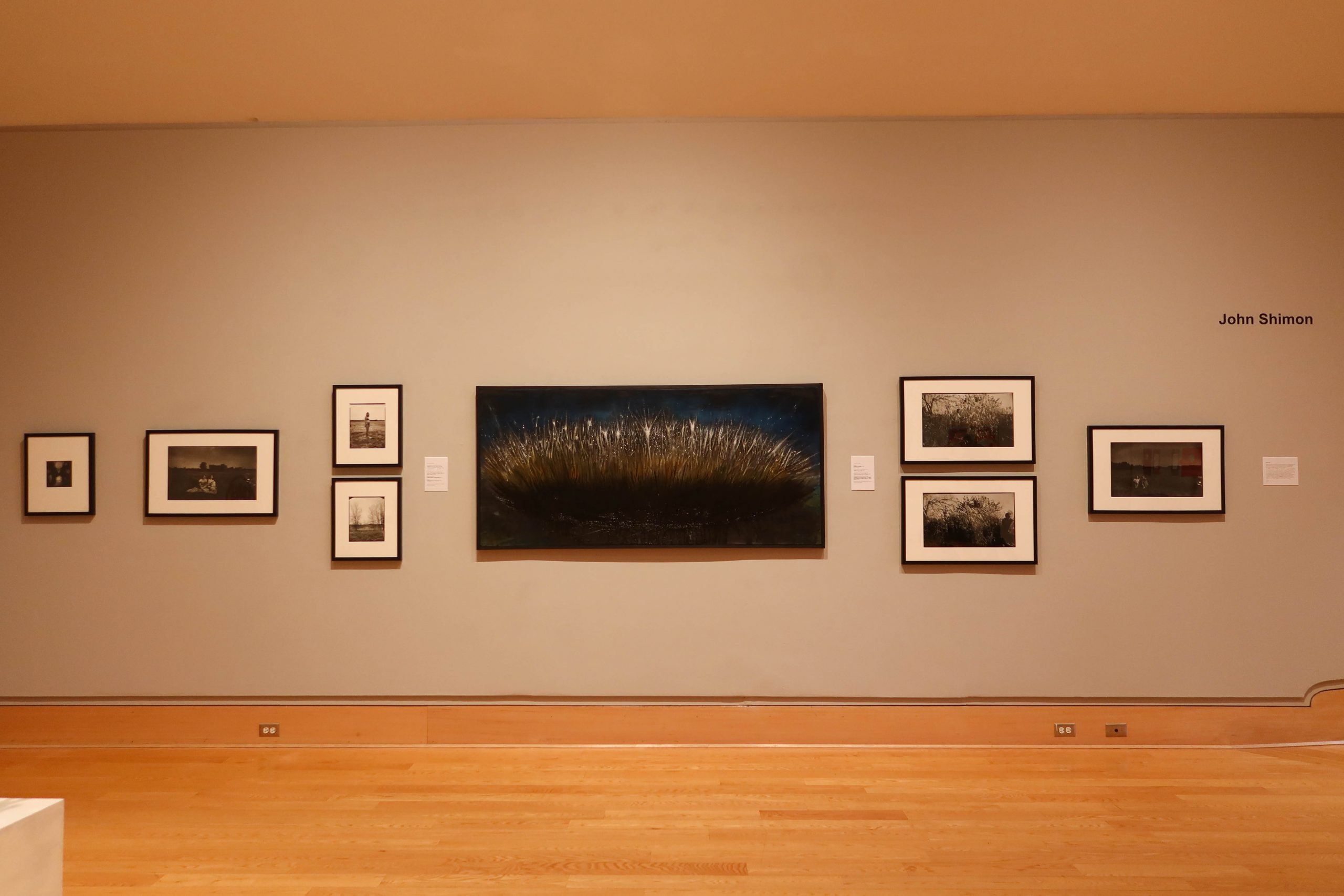The art community of Lawrence University need not look far for talent among its populace. The school’s faculty includes a variety of accomplished artists, perhaps known better to students as teachers than creators. A free-admission exhibition of their work began on Jan. 14 in Wriston Art Center’s Kohler Gallery and is set to continue until Mar. 10. The featured luminaries include Tony Conrad, Rob Neilson, Benjamin Rinehart, John Shimon and Brittany Sievers.
The exhibition is a fitting representation for the world of contemporary art. That is, it clearly displays a global lack of uniformity in artistic styles, contrary to past widespread movements of Romanticism or Mannerism in the West. Indeed, there is little immediate connection between the work of each faculty member. Though in contrast, each individual artist presents a well-defined style in which they operate.
The work of Tony Conrad seems distantly descended from the American color field painters of the mid 20th century. Although Conrad himself cites Persian textiles, Tibetan Buddhism, and psychedelic rock culture as influences. He extends these dialogues to a further individual style. With an emphasis on maze-like structures, he chiefly uses sharp angles and bright colors. To highlight certain segments, occasional darker lines are used.
Symmetry is key in Conrad’s work. Yet his approach also avoids a cliché Raphael-like perfection. The wide palette masks the symmetry’s intensity and offers a pleasing cohesion. It’s difficult to tell from which area the ideas began; the entire artworks are traceable back to any corner or side. The downside is that obtaining a specific mood from Conrad’s work is difficult, if relevant to begin with. Indeed, the colors range so widely that their emittance offers little consolidation for a specific mood.
There is a certain fluidity in the sculptures of Rob Neilson. They contain sets of enlarged words, formed into jumbled sentences with a highly personal font. With seven sculptures in all, the largest is made up with phrase “Today It Seems to Me Providential That Fate Should Have Chosen Jamaica Hospital Medical Center as the Place of My Birth.”
The accompanying plaque to Neilson’s work describes his sculptures as influenced from the ancient Greek graffiti still visible on the remains of early Athens. The dynamic calligraphy seems representative of the Hellenistic sculpture, where depicting naturalistic movement was crucial. Sometimes the liberties taken with textual design make the words difficult to read, but this is an intentional ploy to demand more engagement from the viewer.
Little subtleness appears in the message of Benjamin Rinehart. Indeed, one would not need the nearby plaque to understand the purpose of his art. In a set of seven pieces, each clearly marks a “hope” he holds for humanity. These consist of hopes for increased access to basic needs, universal healthcare, support during hardships, equality, accountability, environmental awareness and love.
Each hope includes a written rationale beside its own popup book. The viewer can directly interact with the art via opening the books. Rinehart clearly offered painstaking attention to the pop-up books, which manage to convey highly intricate scenes. These include gardens, cityscapes, and maps, among others.
John Shimon’s work includes the only photographs of the exhibition. Deeply personal pieces include Shimon himself beside his wife. All but one treat nature as a setting, though it serves more than a background purpose. People are placed amid the long grass, which dominates the crux of each photo’s perspective.
At first glance, it may be difficult to obtain meaning from the sculptures of Brittany Sievers. They appear as huge webs of ceramics and wire, laced together in a mosaic-like fashion. But the nearby description reveals a purpose which is not often considered in typical art exhibitions. That is, the relationship between the viewer, artwork and space in which it is presented.
As massive sculptures, they dominate the walls behind them and fill one is view up close. It becomes quickly clear that the individual pieces are meticulously crafted into unique shapes that preserve enough uniformity to form a whole. Whether this meaning is satisfying may be debatable. However, there is no doubt that Sievers’ work, and indeed the whole exhibition, suggests viewers approach often unexplored questions.



